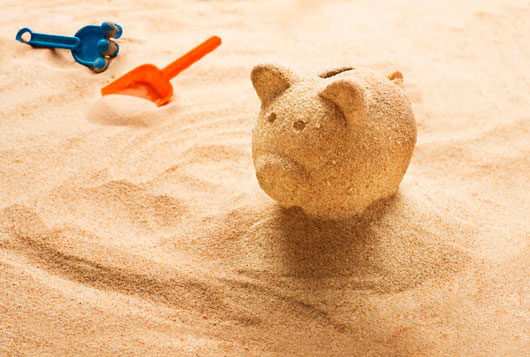
Do you wish you could save on groceries, but aren’t sure where to begin cutting down?
In my last article, I mentioned how, according to the book American Wasteland, the average American wastes 25% of the food that they buy, totaling up to $2,200 a year. It’s time to stop wasting and start saving, and here’s how.
1. Don’t waste money buying what you already have.
Use clear containers for storing cereals, snacks, rice, and pasta. This way, when you’re writing your grocery list, you can see what you’re running low on at a glance.
2. Freeze whatever you can and mark with dates.
Don’t play a guessing game as to how old you think something is. Grab a permanent marker and write the date on the package label before you put it in the freezer. You won’t have to rely on the “when in doubt, throw it out” rule. If you want to be very vigilant, set a reminder on your phone or computer to remind yourself to use what’s in your fridge.
3. Freeze items properly.
Sometimes I purchase two-for-one specials on fruit. But if we don’t eat them right away, they go bad. If you buy two containers of raspberries, strawberries, etc., put one in the fridge to eat right away and the other in the freezer. I use the fresh ones first and then go to my frozen ones, which tend to defrost quickly. Be sure to freeze the fruit properly so it doesn’t go to waste.
4. Plan meals around items that can be used for several dishes.
Constantly coming up with a new recipe for chicken can be draining. Stop eating the same old thing. Robin Miller’s Quick Fix Meals Cookbook has 200 simple recipes showing you how to turn one meal into another. She already has a meal plan set up for you for the week.
5. Keep favorite recipes on hand for quick reference.
I often have to remind my daughters what is appropriate for breakfast, lunch and dinner. “Mom, can I have pizza for breakfast?” “Uh, no.” Maybe I’ll let them slide in college but until then, I keep cookbooks handy!
6. Keep your receipt on the fridge.
No more opening the fridge thinking something new is magically going to appear. The receipt serves as a mini inventory checker and reminder of the expiration date. Check off items once they are used. Circle the items that were thrown away. This way you can quickly track what you are wasting and saving at the same time. If you are really serious about saving money, use software to track what was used and wasted. Even if you were to use all of your food, you can save up to $2,200 a year with this tip alone. Read more about this here.
7. Track what gets wasted.
Continue to use the receipt method to pick up on patterns. If there are certain items that tend to spoil on a regular basis, cut back on how much you buy. Bananas and avocados tend to go bad in our house so I try not to buy too many at once.
8. Have lemons? Make lemonade.
If same items tend to go bad time after time, have recipes on hand for those items you tend to waste. Lemons can be cut and frozen on trays in the freezer. Make banana bread or smoothies with bananas. If you have mangos, make Mexican Mango-Chile Pops.
9. Buy items you can mix and match.
I love to make my own guacamole, but sometimes I don’t have the time. Many salsas have the same ingredients as guacamole minus the avocados. Buy a quality salsa from your supermarket and purchase avocados as well. Make guacamole with the avocados and spoon in some of the store-bought salsa. Mix and serve. I laugh when people ask me how to make it.
10. Think like a restaurant owner.
If you own a restaurant, you quickly have to become good at using your inventory or you will not be in business for very long. Many restaurants get creative with ingredients and offer specials. Apply that same mentality from now on when managing your kitchen and household budget.











